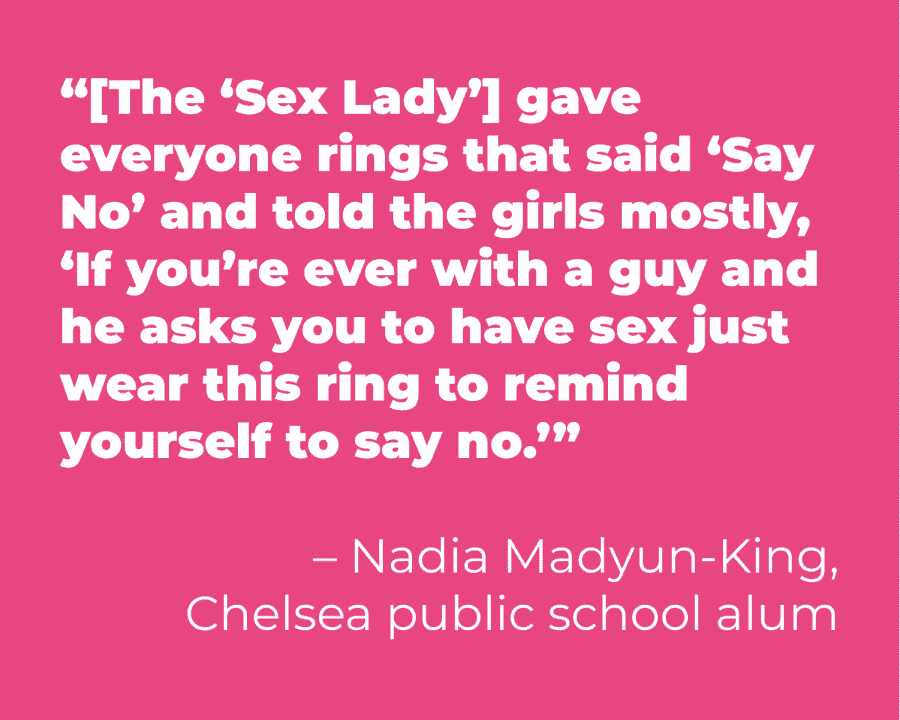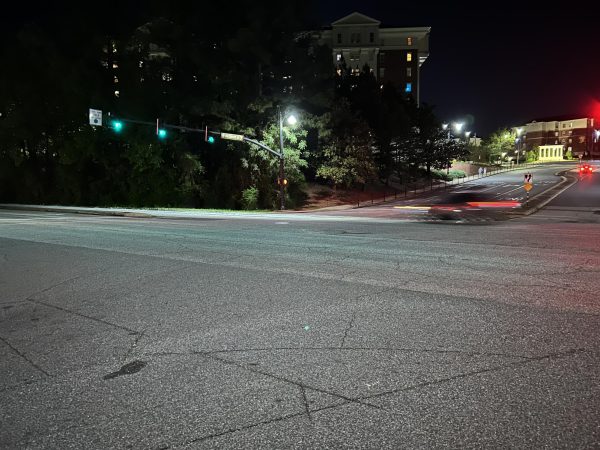Ahead of legislation push, in-state students share sex-ed stories
February 13, 2020
Landon Nichols grew up learning a faith-based version of sex education in his Selma private school, where students were taught an abstinence-only curriculum in a program covertly called “CHANGES.”
Nichols recalled an exercise where one student was instructed to stand on the floor while another was supposed to stand on a desk, with the goal being to pull each other in their own direction.
“The whole point of the exercise was that it’s a lot easier to get pulled down by bad influences than to be pulled up by good ones, so you shouldn’t surround yourself with people who have sex young,” he said, stifling a laugh. “I just remember that being striking, and it just stands out to me because it’s such an oversimplification.”
The exercise was just one example of what Nichols called a “wildly disparate” sex-ed curriculum throughout the state of Alabama, in which some students receive no sexual education; some, like him, get an abstinence-only version.
“It totally depends on your zip code,” he said. “It depends on your school district, and it depends on your individual educator.”
Thirty-eight percent of all high schools and 14% of middle schools in the United States provide all 19 topics identified by the Centers for Disease Control and Prevention (CDC) as critical sex education topics.
Nichols, a UA alumnus, works for Medical Advocacy and Outreach (MAO), a Ryan White-funded HIV-AIDS service organization in Montgomery. MAO advocates for sexual health in 28 Alabama counties, essentially covering the entire Black Belt and Wiregrass regions. The sex education bill is at the top of their legislative agenda.
The new bill, called the Alabama Youth Health Protection Act, does not mandate teaching sex education or a particular curriculum, and it doesn’t promote sexual activity or teach sexual techniques. Rather, it seeks to combat medically inaccurate and homophobic language in the current law. This means that the current law should reflect up-to-date, federally compliant language, which would require terms like “STD” and “AIDS” to be changed to” STI” and “HIV,” Nichols said, as well as striking out derogatory language about “homosexual conduct.”
“It gives administrators and teachers guidance in what is allowed under the law,” he said. “There are a lot of misconceptions about what the law does and does not allow. We believe that by clearing up some of the language, there will be more educators who feel comfortable bringing forth [sex education] curriculum.”
This is the fourth year a similar bill has been introduced in the state legislature and the second year in a row that a bill of its exact form has been introduced. Last year, the bill passed a full Senate with only one dissenting vote, and the same bill that’s being introduced this year was passed by the House education committee last year.
“Really, the impetus for this bill was students asking their administrators and their teachers in the schools for sex ed,” Nichols said, referencing a group called the Alabama Campaign for Adolescent Sexual Health.
Christina Clark Okarmus is the executive director for the Alabama Campaign for Adolescent Sexual Health, which focuses on providing medically accurate and inclusive sexual health to adolescents, as well as providing training to teachers in communities across Alabama.
“What we found when talking to young people is that not only are they not receiving sexual health education and information about their bodies, but they’re also wanting that information and not receiving it,” Clark Okarmus said, attributing high rates of sexual assault and violence on college campuses to the fact that young people aren’t receiving sex education that includes consent. “This information should be easily accessible to young people. They should be able to have trusted adults giving them this information about their bodies, about relationships, about consent.”
The lack of sexual health education disproportionately affects people of color and LGBTQ+ individuals, causing them to be more susceptible to infections, unplanned pregnancy, and sexual violence.
“We advocate for inclusive sex ed policies because we would be ignorant to not talk about gender identity and sexuality,” Clark Okarmus said. “The health outcomes for LGBTQ+ young people are even worse than for young people who are cisgender and/or heterosexual. The homeless rates are higher, bullying rates are higher, suicide ideation and suicide attempts are higher. There’s so much more that is happening in these communities because they’re not supported by the adults in their lives. It really is important for sexual health education to be inclusive of all sexual and gender identities.”
Young people between the ages of 13 and 24 also account for over 1 in 4 new HIV infections in Alabama, according to data from AIDSVu. Home to less than a third of the national population, the U.S. South accounts for over 50% of new HIV infections. Alabama has a slightly better rate in HIV infections than neighboring states, but what is concerning for Nichols is a spike in STIs like chlamydia and gonorrhea.
Nichols’ advice to everyone: Always use protection and get tested regularly.
“As a rural student going to The University of Alabama and exploring new frontiers and really finding myself and going through a lot of experiences, I really should have been tested more regularly,” he said. “But, fear and stigma and misinformation kept me from doing so.”
YOUR STORIES
Abby Barrow, a junior majoring in marine science and biology, didn’t have sex education in her Bibb County public school. Neither did James Pitard, a sophomore majoring in finance and economics. Pitard, a graduate of Birmingham public schools, said the only sex education he received was a two-hour session about puberty in the fifth grade.
“Most people were either informed from their parents, peers or church,” he said.
When he came to college, Henry Pitts, a junior majoring in environmental science, felt like he couldn’t relate to some of his out-of-state peers, who’d often joke about awkward stories from their sex-ed classes. That’s because, like Barrow and Pitard, he didn’t have sex education in his Tuscaloosa Catholic school.
“My sex ed was like a two-week module in 7th grade health class, in which we watched strange 80s VHS tapes where a coach in super-short basketball shorts and a white polo being like, ‘Wash yourself and do a shower check,’” he said. “That was the extent of my sex ed.”
Pitts said most of his peers didn’t realize how limited their sexual education was, and myths quickly began to spread around the lunch table.
“A big thing that all of the guys in my high school thought was that there was one day a month that a girl could get pregnant,” Pitts said. “So if you could figure out what day that was, you were safe to have unprotected sex during the rest of the month.”
In her Baldwin County public school, Ashley Hudson, a current masters student in communication and information sciences, spent half a semester learning drivers ed, and the other half learning sex education during her junior year. She said the curriculum largely focused on consequences, such as pregnancy and STIs, and not about prevention, such as testing and protection. Class time reserved for sex education was also spent on other topics, like first aid and CPR.
“Honestly it was completely pointless,” Hudson said. “Outside of CPR, I couldn’t tell you a single thing that I retained from that class. They would’ve been better just leaving us alone with YouTube for the class and letting us learn through that.”
For students who aren’t exposed to a medically accurate sex education curriculum in school, the internet or peer-to-peer education may be the only option. But that didn’t sit easily with Pitts.
“I just don’t understand why we expect middle and high schoolers to have to sift through this wealth of knowledge – half of which is incorrect – for themselves,” Pitts said. “They’re going to figure it out eventually, so why not just make it easy and correct the first time?”
For more information about sexual health disparities, click here











